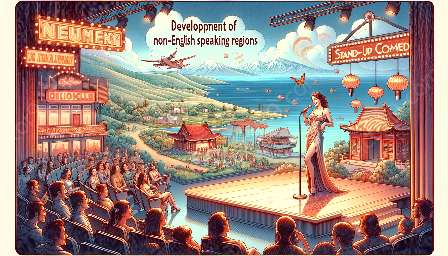Observational comedy, a popular genre in stand-up comedy, is heavily influenced by culture in different parts of the world. The act of observing day-to-day situations and sharing humorous insights is inherently tied to the cultural and societal norms of a particular region. Let's explore how cultural influences shape observational comedy and the cross-cultural differences in stand-up comedy.
Cultural Influences on Observational Comedy
Observational comedy relies on relatable experiences and perspectives that resonate with the audience. Cultural influences play a significant role in shaping what is considered funny and relatable in different parts of the world. Here are some key cultural influences on observational comedy:
- Language and Communication: The nuances of language and communication styles vary across cultures, impacting how observational humor is delivered and received. Puns, wordplay, and idiomatic expressions are often culture-specific and may not translate well across different languages and cultural contexts.
- Social Norms and Taboos: Cultural norms and taboos heavily influence the topics that comedians address in their observational comedy. What may be considered acceptable or taboo in one culture may differ in another, requiring comedians to navigate these cultural differences when crafting their material.
- Everyday Life and Customs: The everyday experiences and customs of a particular culture provide rich material for observational comedy. From traffic patterns to dining etiquette, comedians draw humor from the idiosyncrasies of daily life, which can vary widely across cultures.
- Political and Societal Issues: Political and societal issues often serve as fodder for observational comedy. However, the relevance and sensitivities around these topics differ across cultures, shaping the boundaries of what can be humorously explored in stand-up routines.
Cross-Cultural Differences in Stand-Up Comedy
As stand-up comedy travels across borders, it encounters cross-cultural differences that impact the reception and delivery of observational humor. These differences can manifest in various ways:
- Humor Dynamics: Cultural variations in humor dynamics influence audience responses to observational comedy. What may elicit laughter in one culture might be met with silence or confusion in another, highlighting the need for comedians to understand and adapt to diverse audience expectations.
- Comedic Styles: Different cultures have distinct comedic traditions and styles, influencing the approach and delivery of observational comedy. While some cultures may favor sarcasm and irony, others may lean towards slapstick or self-deprecating wit, leading to diverse comedic expressions.
- Social Commentary: Observational comedy often delves into social commentary, reflecting the values and concerns of a particular society. Comedians must navigate these differences sensitively, as societal issues that resonate in one culture may not hold the same significance in another.
- Transcultural Adaptation: Stand-up comedians who perform in diverse cultural settings need to adapt their observational humor to resonate with local audiences. This process requires an understanding of cultural nuances and the ability to contextualize humor without losing its essence.
Conclusion
Observational comedy in stand-up reflects the diversity and richness of cultural influences around the world. Understanding these influences not only enhances our appreciation of comedic artistry but also sheds light on the unique ways in which humor intersects with culture. As stand-up comedy continues to evolve across global platforms, the recognition and celebration of cross-cultural differences in observational comedy become essential for fostering comedic inclusivity and understanding.
























